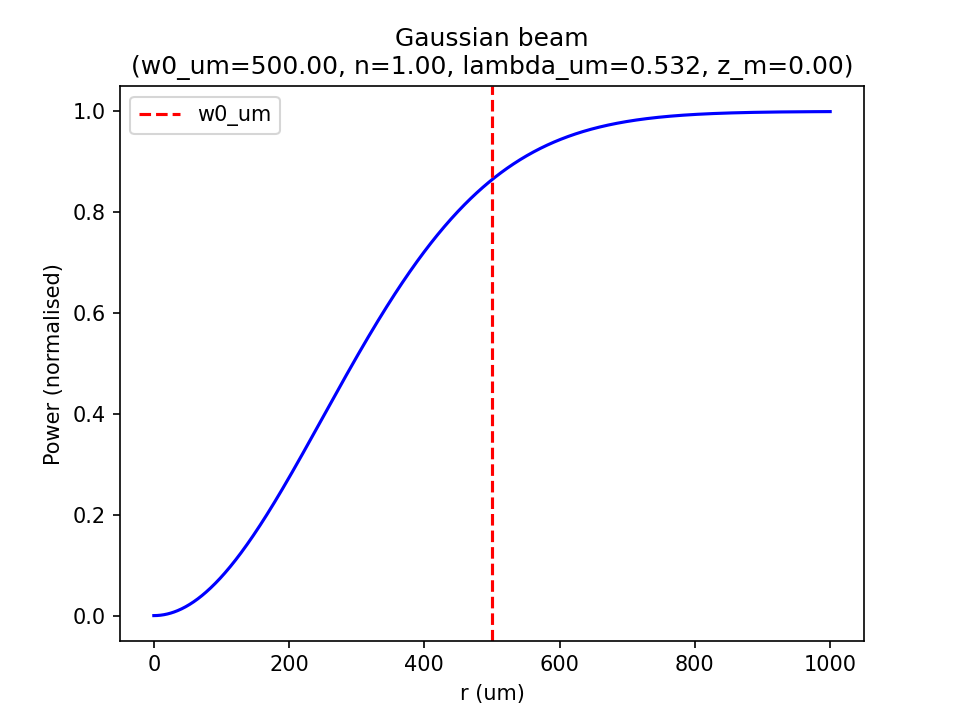Gaussian beam
Equations and derivations, with calculations and plots in Python.
ContentsPower through aperture
Following the same shell integration method as the 'total power' derivation, we can find the power as a function of \(r\) and \(z\) in a general form: \[ P(r,z) = 2\pi \int_0^r rI(r,z) dr \tag{1}\] where: \[ \int rI(r,z) dr = -\frac{1}{4}w(z)^2 I(r,z) \tag{2}\] and so: \[ P(r,z) = 2\pi \left[ -\frac{1}{4}w(z)^2 I(r,z) \right]_0^{r} \tag{3}\] and from the definition of \(I(r,z)\): \[ w(z)^2I(r,z) = I_0 w_0^2 \exp \left(\frac{-2r^2}{w(z)^2}\right) \tag{4}\] so we can rewrite (3) into: \[ P(r,z) = \frac{1}{2} \pi I_0 w_0^2 \left[ -\exp \left(\frac{-2r^2}{w(z)^2}\right) \right]_0^{r} \tag{5}\] and evalute to the convenient form: \[ P(r,z) = P_0 \left[1 - \exp \left(\frac{-2r^2}{w(z)^2}\right) \right] \tag{6}\] Note that if we set the apeture to radius to \(r=w(z)\) then we block about 13.5% of the light: \[ P(w(z),z) = P_0 \left[1 - \frac{1}{e^2} \right] \approx 0.86P_0 \tag{7}\]
